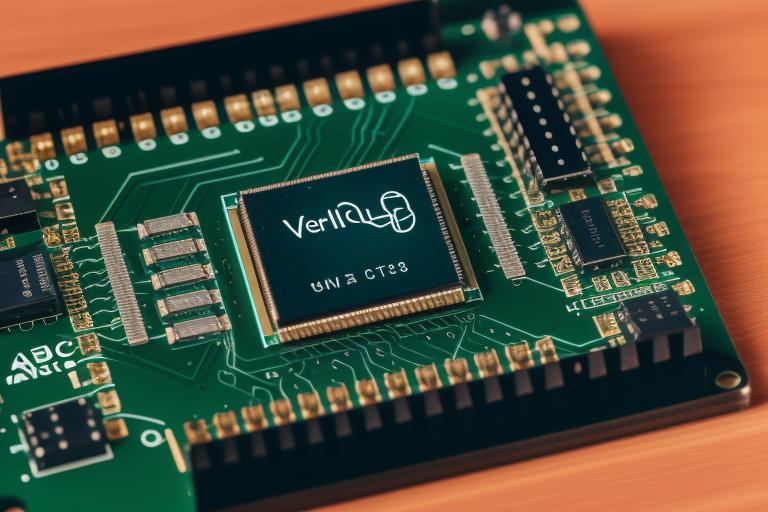Introduction to Verilog modules
Verilog is a hardware description language widely used in the field of digital design and verification. One of the key building blocks in Verilog is the module. In this article, we will explore the syntax and functionality of Verilog modules, providing a comprehensive guide to understanding their role in designing digital circuits.
A Verilog module is a logical unit that encapsulates a specific functionality within a larger design. It allows designers to organize their code into manageable and reusable components. Modules can represent anything from basic gates to complex arithmetic units, making them a fundamental concept in Verilog.
Basics of Verilog module syntax
To define a Verilog module, we use the module keyword followed by the module name. The module name is typically capitalized and should be unique within the design. It is good practice to choose a descriptive name that reflects the module’s purpose.
Inside the module declaration, we specify the inputs and outputs of the module. These are known as ports and are defined using the input and output keywords. Ports can be single-bit or multi-bit signals and are declared using the wire or reg data types. For example, input wire [7:0] data_in defines an 8-bit input port called data_in.
| module MyModule(input wire [7:0] data_in, output wire [7:0] data_out); // Module implementation goes here endmodule |
Understanding module inputs and outputs
Inputs and outputs in Verilog modules serve as the means for communication with the outside world. Inputs are signals that carry information into the module, while outputs are signals that carry information out of the module. By defining the inputs and outputs, we specify the interface of the module.
Inputs and outputs can be connected to other modules or external circuitry using wires. They allow for the exchange of information between different parts of the design. For example, if we have a module that performs addition, the inputs could be the two numbers to add, and the output would be the sum of those numbers.
It is important to note that inputs and outputs are unidirectional in Verilog. This means that a signal declared as an input cannot be assigned a value inside the module, and a signal declared as an output cannot be read from within the module.
Parameters and local variables in Verilog modules
Verilog modules can also have parameters and local variables. Parameters are constants that can be customized when the module is instantiated. They are defined using the parameter keyword and can be used to configure the behavior of the module. For example, we could have a parameter that specifies the width of the input bus.
Local variables, on the other hand, are variables that are local to the module. They are declared using the reg keyword and can be used to store intermediate values during the execution of the module. Local variables are useful for implementing complex functionality within the module while keeping the interface clean and simple.
Both parameters and local variables can greatly enhance the flexibility and reusability of Verilog modules. They allow designers to easily customize the behavior of a module without modifying its source code, making the design process more efficient.
Verilog module instantiation examples
To use a Verilog module within a larger design, we need to instantiate it. Module instantiation is the process of creating an instance of a module and connecting its ports to other signals in the design. Let’s take a look at a couple of examples to illustrate the process.
| module MyModule(input wire [7:0] data_in, output wire [7:0] data_out); // Module implementation goes here endmodule module TopModule(input wire [7:0] input_data, output wire [7:0] output_data); MyModule my_module(.data_in(input_data), .data_out(output_data)); endmodule |
In this example, we have a module called MyModule with an 8-bit input port data_in and an 8-bit output port data_out. We then instantiate MyModule within another module called TopModule and connect its ports to the input_data and output_data signals.
Module instantiation allows for modular design and can greatly simplify the design process by breaking down complex functionality into smaller, more manageable modules.
Advanced Verilog module functionality
Verilog modules offer a wide range of advanced functionality beyond the basics covered so far. Some of these features include parameterized modules, hierarchical naming, and module instantiation with dynamic connections.
Parameterized modules allow for the creation of modules that can be customized based on user-defined parameters. This enables the reuse of a single module for different configurations, saving both time and effort in the design process.
Hierarchical naming allows for the organization of modules into a hierarchical structure, making it easier to understand and navigate complex designs. It also helps in avoiding naming conflicts and promoting code reusability.
Module instantiation with dynamic connections allows for the creation of modules whose connections can change at runtime. This can be useful in scenarios where the connectivity between modules needs to be dynamically reconfigured based on certain conditions or inputs.
These advanced features demonstrate the power and versatility of Verilog modules, allowing designers to create complex and flexible digital designs.
Conclusion
Verilog modules are the building blocks of digital design in Verilog. They provide a way to organize and encapsulate functionality within a design, making it easier to manage and reuse code. By understanding the syntax and functionality of Verilog modules, designers can create efficient and flexible designs that meet their specific requirements.
In this article, we have explored the basics of Verilog module syntax, the role of inputs and outputs, the use of parameters and local variables, module instantiation examples, and advanced module functionality. Armed with this knowledge, designers can confidently approach Verilog module-based designs and unlock the full potential of the Verilog hardware description language.












